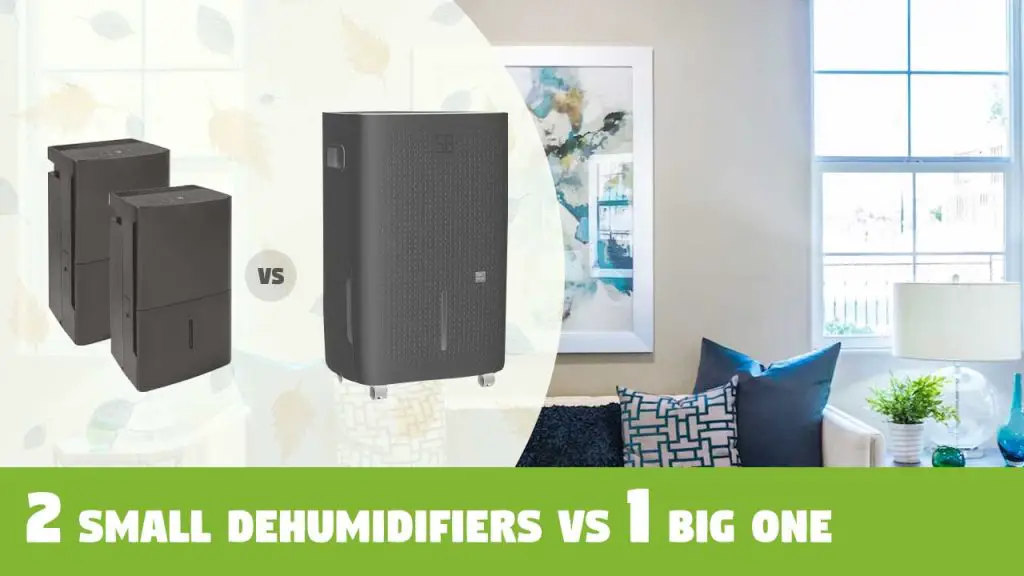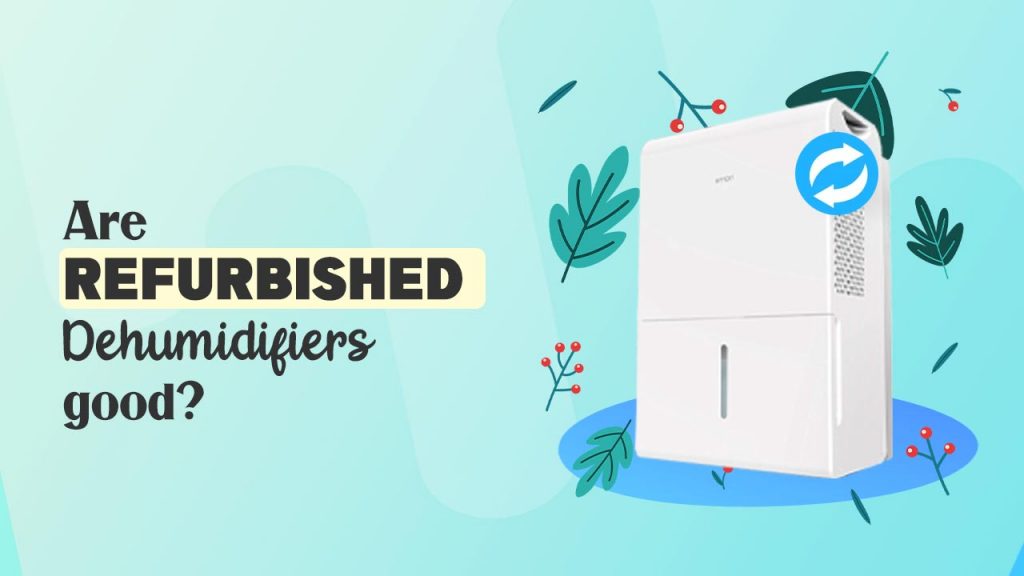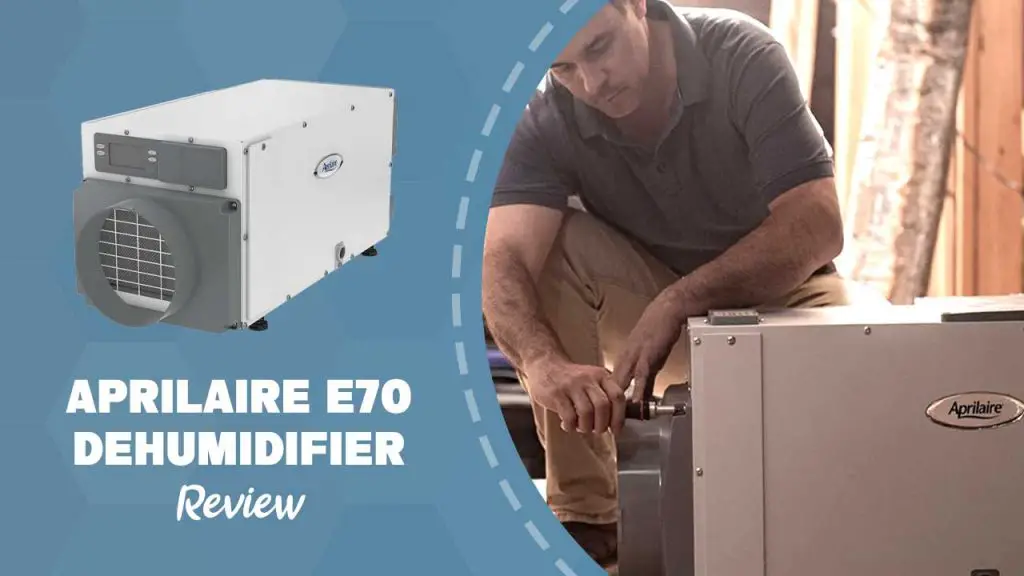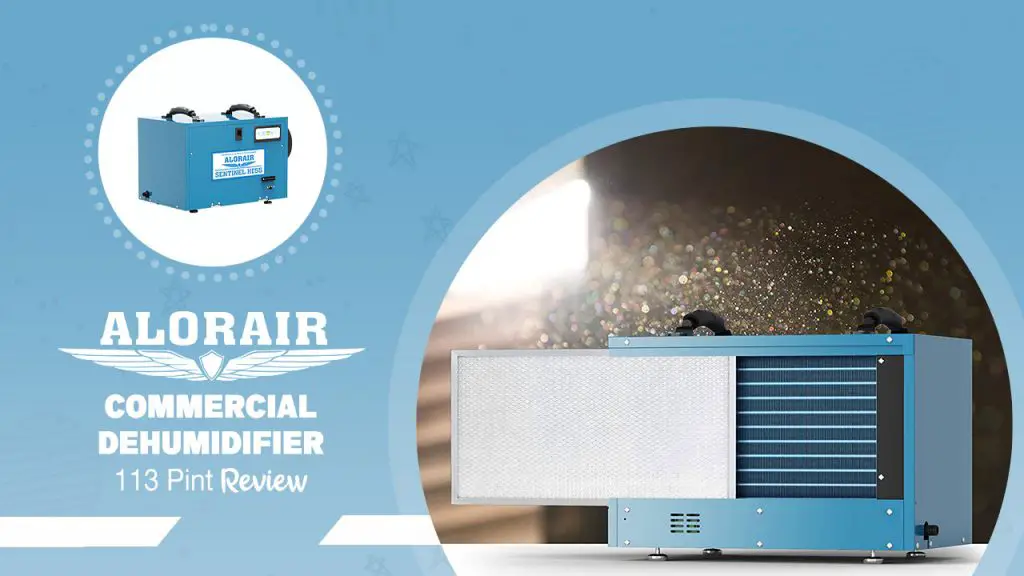Except for cooling, dehumidifiers work pretty much like air conditioners, because they reduce humidity and moisture. And like ACs, there is often the concern of water collecting in the machine.
So, what next? That’s the million-dollar question.
It’s important to emphasize that a dehumidifier works by collecting airborne moisture to reduce the amount of humidity in the room.
This post became necessary because we’ve had so many people ask such questions as; Where does all the moisture go? Will it drain out or evaporate? Do I have to empty the dehumidifier? What happens to the water the appliance collects? If you’re reading this, then you’re in luck.
We’ve got room for many more answers, so just stick with us.
Do you have to put water in a dehumidifier?
No, you don’t. Unlike a humidifier that requires water to add moisture in the room, a dehumidifier is the direct opposite.
Rather than put water in it, the dehumidifier actually collects water on its own from the room and surrounding spaces. You will need to empty it frequently too to avoid having a mess in your home.
If you leave your dehumidifier working at home and you leave the house, you may return to find it filled with water.
So, back to the question. You do not need to put water in a dehumidifier because it doesn’t need water to work.
How much water should a dehumidifier collect in a day?
This largely depends on the size and capacity of the dehumidifier. Manufacturers of most machines claim they can collect between the range of 10 and 20 liters (3 and 6 gallons) of water daily.
However, observation has shown that most standard dehumidifiers have a water collection capacity of between 3 and 5 gallons daily. There are also larger units that can collect as much as 50 liters (about 13 to 14 gallons) each day.
The tank size of the dehumidifier is also an indication of how much water the unit is able to collect. If your dehumidifier has a 20-liter tank, expect a water collection performance of around 7 liters daily.
If it is a 10-liter dehumidifier, it may collect as much as 4 liters of water per day. Typically, a dehumidifier’s water collection ability depends on temperature, its power and relative humidity.
Logically, the large dehumidifier that can collect 13 or 14 gallons of water per day can do so at around 86° F and not less than 85% relative humidity.
Factors that determine how much water a dehumidifier should/can collect daily
1. Average Humidity
The essence of deploying a dehumidifier is to help reduce excess humidity to the recommended level of 30% to 50%.
This means whatever your humidity detector tells you about the humidity level will determine how much water your unit needs to collect. Where humidity is highly excessive, you’d need to extract a high volume of water and vice versa.
2. Temperature
With higher temperature comes increased humidity in most cases. Where humidity is higher and the temperature is warmer, it is more likely for your dehumidifier to collect more water than during cold weather.
A slight change in temperature may not cause any significant change in the effectiveness of your unit, but the temperature does play a major role in just how much moisture can be collected by your dehumidifier.
3. Capacity of Unit
This is one factor you cannot ignore. At the end of the day, it comes down to the power, capacity and quality of your machine.
We earlier explained that the size of the unit determines its water collection ability, and it needs to be emphasized. In other words, choose the dehumidifier capacity that suits your weather condition and needs.
4. Space
Whether you like it or not, the space that the dehumidifier is able to cover will also determine how much water it can collect.
Whole-house, large-space units will ultimately draw in more moisture than smaller units that can cater to only a few hundred square feet.
How often do you have to empty dehumidifier?
There’s a general rule of thumb that requires you to empty your dehumidifier as frequently as the situation demands. If your dehumidifier is in a really humid and damp room, you may have to empty the appliance twice daily.
However, where humidity is not ridiculously excessive, once every two days is a pretty good schedule.
To put that into perspective, we can assume that under very humid conditions, a 10-liter dehumidifier will need to be emptied daily at the least.
On the other hand, you’ll have to empty larger units even more often because they collect more water than smaller units.
Some people have hoses attached to their units to help drain the water by leading it out of the house, so they don’t have to worry about emptying their units.
What happens if you don’t empty the dehumidifier?
It is very unlikely that an overflow of water from the dehumidifier tank will cause damage to your machine, but it certainly will cause some damage to your home.
Tanks are often located at the base of the unit, so spills do not have to run over sensitive parts of the machine, but the unit simply releases the excess water through the floor.
If you have a rug or other absorbent types of carpets, this can be a major problem. Also, be sure you don’t have wires running around on the floor to avoid damage to appliances or electrocution.
The best thing to do is to empty the unit as frequently as possible, whether it is full or not. Have your personal remind you if you must, especially if you’re using an older model.
Most modern units have timers, safety features and even drainage systems for your convenience.
How does a dehumidifier with built in pump work?
The built-in pump dehumidifier usually comes with a hose that is connected to the unit’s drain outlet. The essence of the pump is so that you do not need to raise your unit to gain height for easy drainage (like when using a simple hose).
This is considered the most hassle-free way to drain your dehumidifier. It ensures the water collected by a dehumidifier is emptied on a continuous basis into a sink or drained through the floor far away from the unit.
The pump actually pushes the water up (sometimes as high as 15 feet) and through the hose, and is emptied outside the house through the window, the sink or any other place that you deem appropriate.
Top 3 Dehumidifiers with Built in Pumps
1. TOSOT 50 Pint Dehumidifier with Internal Pump [Best Price]
This 50-pint dehumidifier is a truly outstanding whole-house unit, with a coverage capacity of 4,500 Square feet.
It can eliminate as much as 50 pints of moisture daily.
It is perfectly engineered with a removable drain bucket, which you may only need to remove for cleaning purposes.
The built-in pump does its job without any hassles. It removes collected water and helps to erase downtime that would’ve been used to empty the bucket. One amazing point to note is that the pump can push water vertically or sideways by up to 12 feet.
Once detected that the tank is almost full, the pump will be activated to direct the water to the designated drainage. The product also has a real-time humidity monitor to ensure you keep tabs on the indoor humidity levels.
What’s more, the device is energy efficient by up to 30% and gives you quiet operation, peaking at 51 dB.
2. Ivation 4,500 Sq Ft Energy Star Dehumidifier with Pump [Value for Money]
Ivation storms the dehumidifier market with this highly reliable and efficient dehumidifier.
For all its work and effort, it is a shock that this unit saves a lot on energy costs.
And you don’t even have to break the bank to get your hands on this one.
At 50 pints, this unit has been touted to do as much as 70 pints per day, given the right conditions. The 16-watt pump is also on hand to continuously drain collected water from the unit to keep it working effectively and prevent spillage as well.
The product is equipped with a built-in humidity sensor, a LED display indicator for its humidistat, timer, fan speed, setting, and filter alert, among other functions.
3. GE Energy Star 50 Pint Dehumidifier with Built-In Pump [Best Features]
Manufactured by a truly trusted brand, this is another product that represents the quality mark that GE is known for.
This 50-pint dehumidifier is a high-performing unit that can reduce humidity in large and medium spaces.
Its built-in pump means you don’t have to worry about manually emptying the unit every day.
Just ensure it is properly installed and you’re good to go. We particularly love the exterior grey color that will conveniently complement your home interior and blend in beautifully.
Whether vertically or horizontally, the pump can drain collected water at locations as far as 16 feet away, using the attached hose. There is also an air filter that is kept in shape via a filter alert that tells when cleaning is required.
The other amazing features include empty bucket alarm, LED digital controls, easy-roll wheels, and 24-hour energy-saving timer.
Final Words:
A dehumidifier can be a great asset in your home. But when you do not know which is best for you or how to care for it, a lot of things can go bad.
However, getting a dehumidifier with a built-in pump can save you a lot of trouble by not only keeping the humidity level in check but also ensuring you do not have spills in your home.
| Photo | Title | Buy |
|---|---|---|

|
LEVOIT Air Purifier for Home & Bedroom - For Allergies and Pets Hair | Check Price On Amazon |

|
BREEZOME 60 OZ Quiet Dehumidifiers for Home, Dual-Semiconductor | Check Price On Amazon |

|
AquaOasis™ Cool Mist Quiet Ultrasonic Humidifier for Bedroom & Large room | Check Price On Amazon |

|
43.3'' Portable Air Conditioners, 3-IN-1 Evaporative Air Cooler w/Remote | Check Price On Amazon |

|
BlueDri BD-AS-550-BL Negative Machine Airbourne Cleaner HEPA Air Scrubber | Check Price On Amazon |












